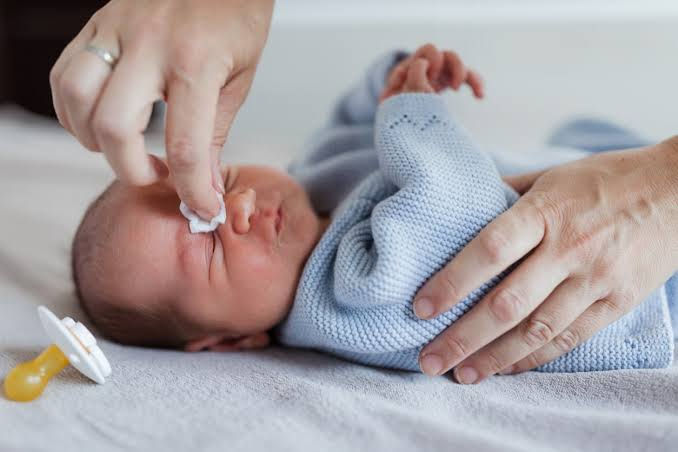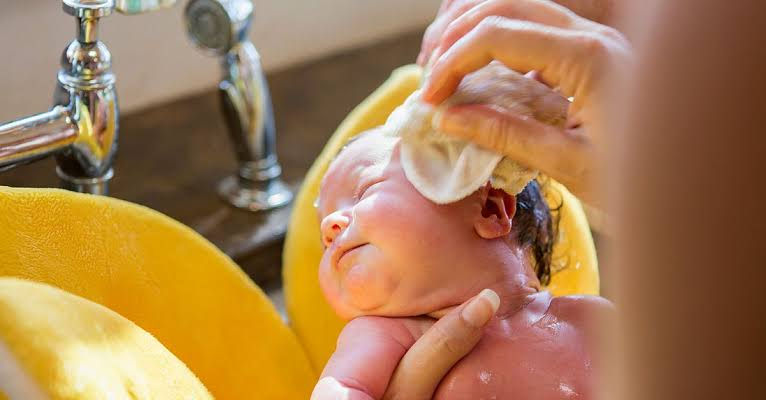
How to Change Your Baby’s Diaper: A Step-by-Step Guide
- Druzycare
- Nov 28, 2024
- 3 min read
Changing your baby’s diaper is one of those skills that, while simple in theory, can be tricky to master especially in the early days. Whether you’re a new parent or just looking for a refresher, here's a step-by-step guide to help you change diapers efficiently, while keeping your baby comfortable and your changing area as mess-free as possible.

Why Diaper Change Matter?
Changing diapers promptly is essential for your baby’s comfort and skin health. Leaving a wet or soiled diaper on for too long can lead to diaper rash, discomfort, and even infections. Diapering regularly helps avoid these issues, keeps your baby fresh, and maintains a good hygiene routine.
What You’ll Need
Before you begin, gather the supplies. Having everything you need within reach makes the process smoother and keeps you from leaving your baby unattended.
Diapers (disposable or cloth).
Baby wipes or a soft washcloth with warm water for sensitive skin.
Diaper cream (if needed for rash or irritation).
Changing pad or towel for a clean surface.
Plastic bag for soiled diapers if there isn’t a diaper pail nearby.

Step-by-Step Guide to Changing a Diaper
1. Set up your changing area. Lay out a clean changing pad, towel, or blanket on a flat surface. Ensure that the area is free from sharp objects or anything that could be a hazard to your baby.
2. Place your baby down gently. Position your baby on their back on the changing pad. Use the safety straps if available, or keep one hand on your baby to prevent rolling.
3. Remove the soiled diaper. Open the tabs on the soiled diaper and pull the front of the diaper down. Hold your baby’s legs gently by the ankles and lift them slightly, then slide the dirty diaper away. Be sure to fold the diaper closed and set it aside, out of reach.
4. Clean your baby’s diaper area. Use baby wipes or a washcloth with warm water to wipe the diaper area thoroughly, moving from front to back to avoid spreading bacteria. Pay special attention to creases and folds where moisture can get trapped.
5. Apply diaper cream (if necessary). If your baby is prone to diaper rash or you notice any redness, apply a thin layer of diaper cream to protect their skin. Be sure to check with your pediatrician about the best cream for your baby’s skin if it’s sensitive.
6. Slide a clean diaper under your baby. Position the back half of the clean diaper under your baby’s bottom while holding their ankles. Bring the front half up and over their belly.
7. Secure the diaper. Attach the tabs securely on both sides. Make sure the diaper is snug but not too tight—check that you can fit two fingers comfortably between the diaper and your baby’s stomach. If the diaper has elastic leg cuffs, pull them out to prevent leaks.
8. Dispose of the dirty diaper and wash your hands. Wrap the used diaper securely and toss it in a diaper pail or plastic bag. Then, wash your hands thoroughly or use a baby-safe hand sanitizer.

Tips for a Smoother Diaper Changing Routine
Keep a toy nearby: Some babies get restless during diaper changes, so having a small toy to keep their hands occupied can be helpful.
Talk or sing to your baby: Babies love familiar voices, and talking or singing can be soothing during diaper changes.
Stock up on diapers and wipes: Having extras within reach can prevent mid-change scrambling, which is especially important in the early months when changes are frequent.
Check the diaper area regularly: Diaper changes are a good opportunity to check for redness, rash, or any unusual signs that may need your pediatrician’s attention.
Diaper Changes on the Go
If you're out and about, a portable changing mat and a well-stocked diaper bag make all the difference. Look for a compact pack that includes diapers, wipes, a change of clothes, and diaper bags for disposal. Many public places have changing stations in restrooms, but keeping your own supplies ensures you're prepared.
Diaper changes can become a special bonding time with your baby, and as you settle into a routine, you’ll find that it gets easier. Every parent develops their own style, so don’t stress if things feel awkward at first. With a bit of practice, diaper changes will become second nature—and a perfect opportunity to enjoy these sweet early moments with your little one.





Commentaires